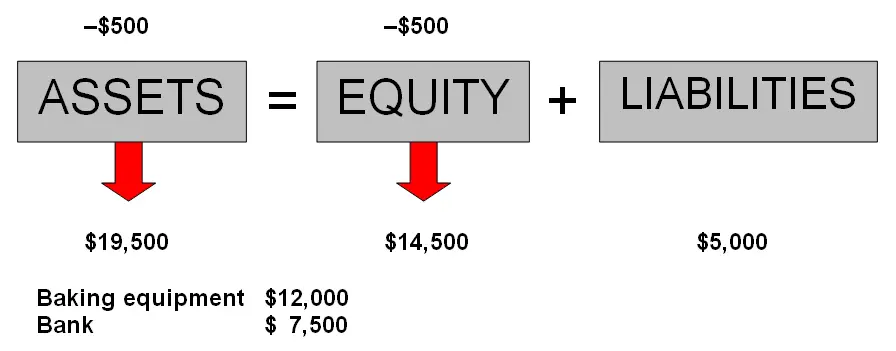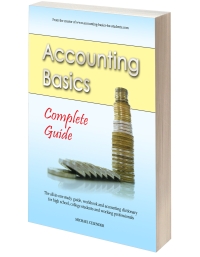Drawings Example
Previous lesson: Asset Purchase Example
Next lesson: What is Profit and Loss?
Welcome to our drawings example. In this tutorial we're going to learn what drawings is and how it relates to owner's equity and capital, and then use our sample business, George's Catering, to see how it affects the accounting equation.
Check your understanding of this lesson by taking the quiz in the Test Yourself! section further below. And right at the bottom of the page, you can find more questions on the topic submitted by fellow students.
Capital vs Drawings
In our previous tutorial on owner's equity, we saw that a business owner can invest capital in a business.
Capital simply means the investment of assets in a business by the owner.
Just as the owner can invest assets in the business – so too can he remove them from the business for personal use.
When the owner removes assets from his business, we call this drawings. This is because the owner withdraws assets.
Drawings is the exact opposite of capital.
Example of Drawings
The accounting equation for George's Catering stood as follows after our first few transactions (investing capital, taking out a bank loan and purchasing baking equipment):

Please note: In the explanation below we'll cover the accounts that are affected and what happens with the accounting equation - but not the journal entry. To see the full debit and credit entry for this example, click through to our advanced lesson Journal Entry for Drawings, where we'll cover this in detail.
d) George Burnham is running short of cash at home. He needs some money to buy his daughter a bicycle for her birthday (i.e. for personal use). He decides to withdraw $500 from the business bank account. What is the impact on the equation for George’s Catering?
The impact on the accounting equation for George's Catering is the exact opposite of what happens with capital:
The assets of the business have decreased, and the owner‘s stake in the business assets has decreased, so assets and owner’s equity both decrease.
Notice again that liabilities (debts to external parties) are unaffected. Their stake will be the same as it was before this transaction ($5,000). The bank loan of $5,000 is still $5,000 - nothing has changed with this.
George’s Catering now consists of assets of $19,500. Bank has now decreased by $500. So assets are now made up of baking equipment to the value of $12,000 and cash of $7,500.
Want to see the journal entry for this?
Test Yourself!
Before you start, I would recommend to time yourself to make sure that you not only get the questions right but are completing them at the right speed.
Difficulty Rating:
Beginner
Quiz length:
2 questions
Time limit:
3 minutes
Important: The solution sheet on the following page only shows the solutions and not whether you got each of the questions right or wrong. So before you start, get yourself a piece of paper and a pen to write down your answers. Once you're done with the quiz and writing down your answers, click the Check Your Answers button at the bottom and you'll be taken to our page of solutions.
Good luck!
Okay, so that's it for our drawings example tutorial. I hope this concept makes more sense now.
If you're having trouble with this lesson, return to the earlier one called What is Owners Equity? to review what owners equity means in terms of the accounting equation.
Otherwise, if you're doing well, feel free to move ahead to the next lesson, where we'll go over the concept of accounting profit and loss.
Return from Drawings Example to Basic Accounting Transactions
Return to the Home Page
Stay up to date with ABfS!
Follow us on Facebook:
Previous lesson: Asset Purchase Example
Next lesson: What is Profit and Loss?
© Copyright 2009-2023 Michael Celender. All Rights Reserved.
Click here for Privacy Policy.








Comments
Have your say about what you just read! Leave me a comment in the box below.